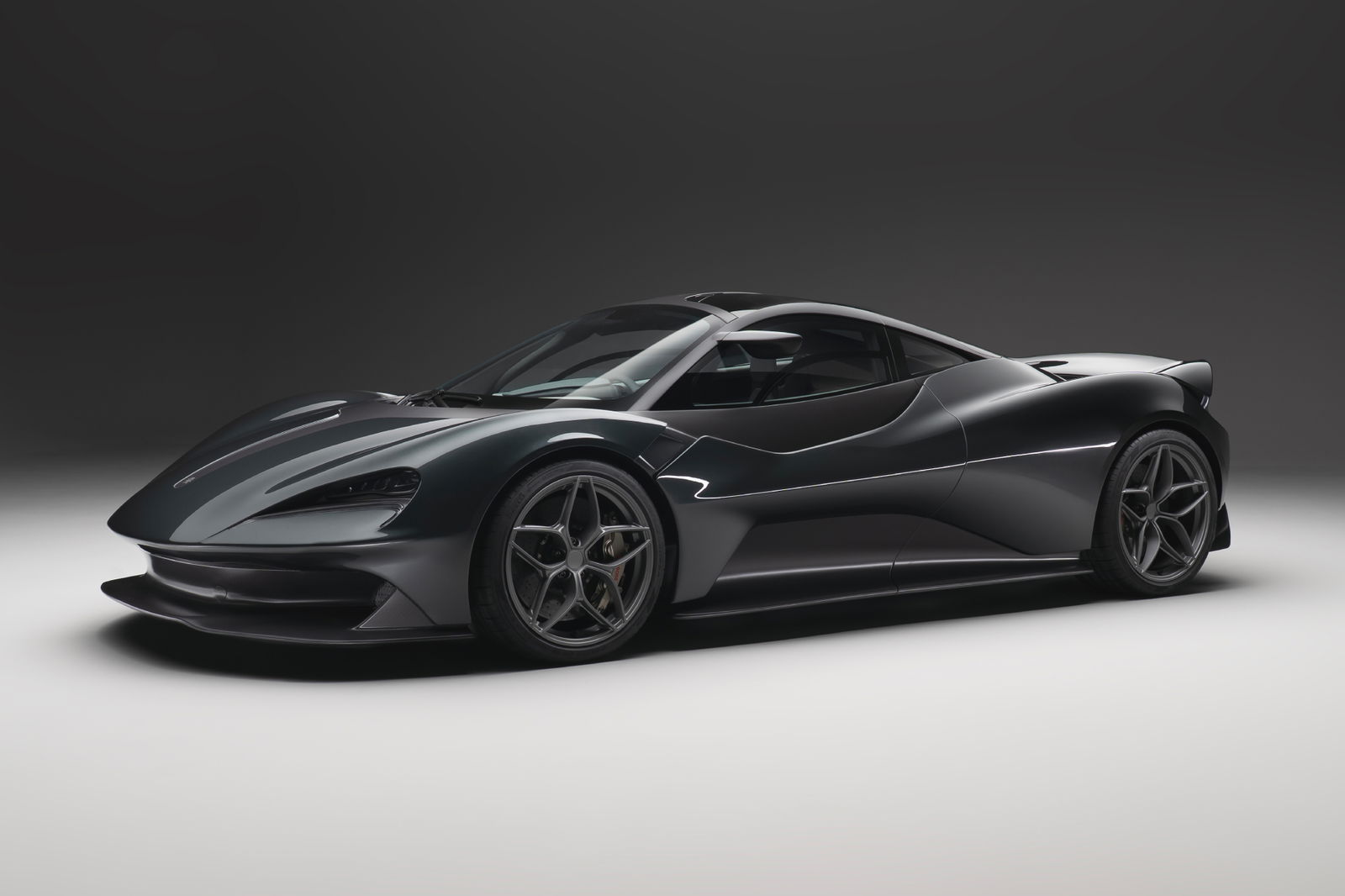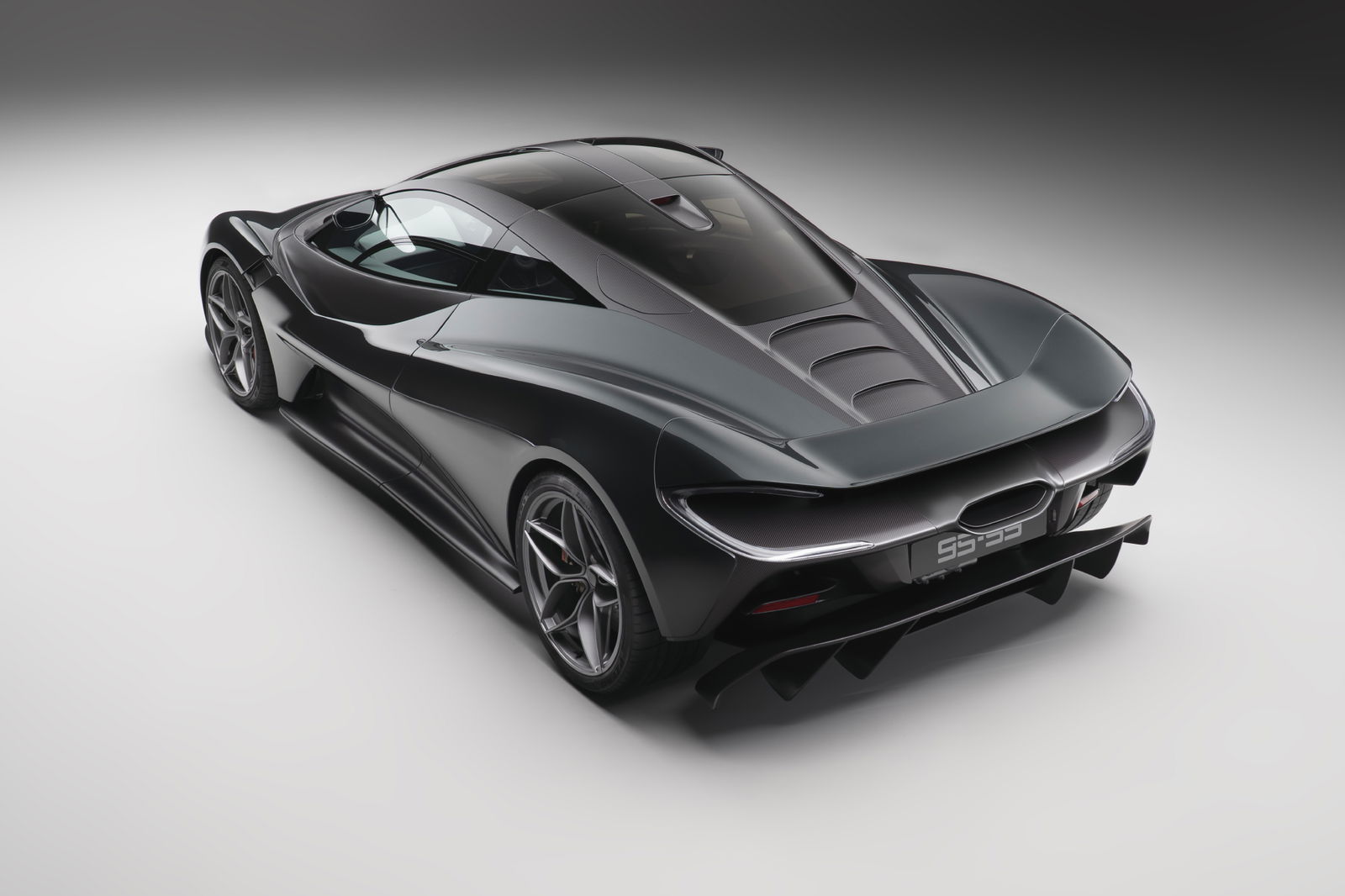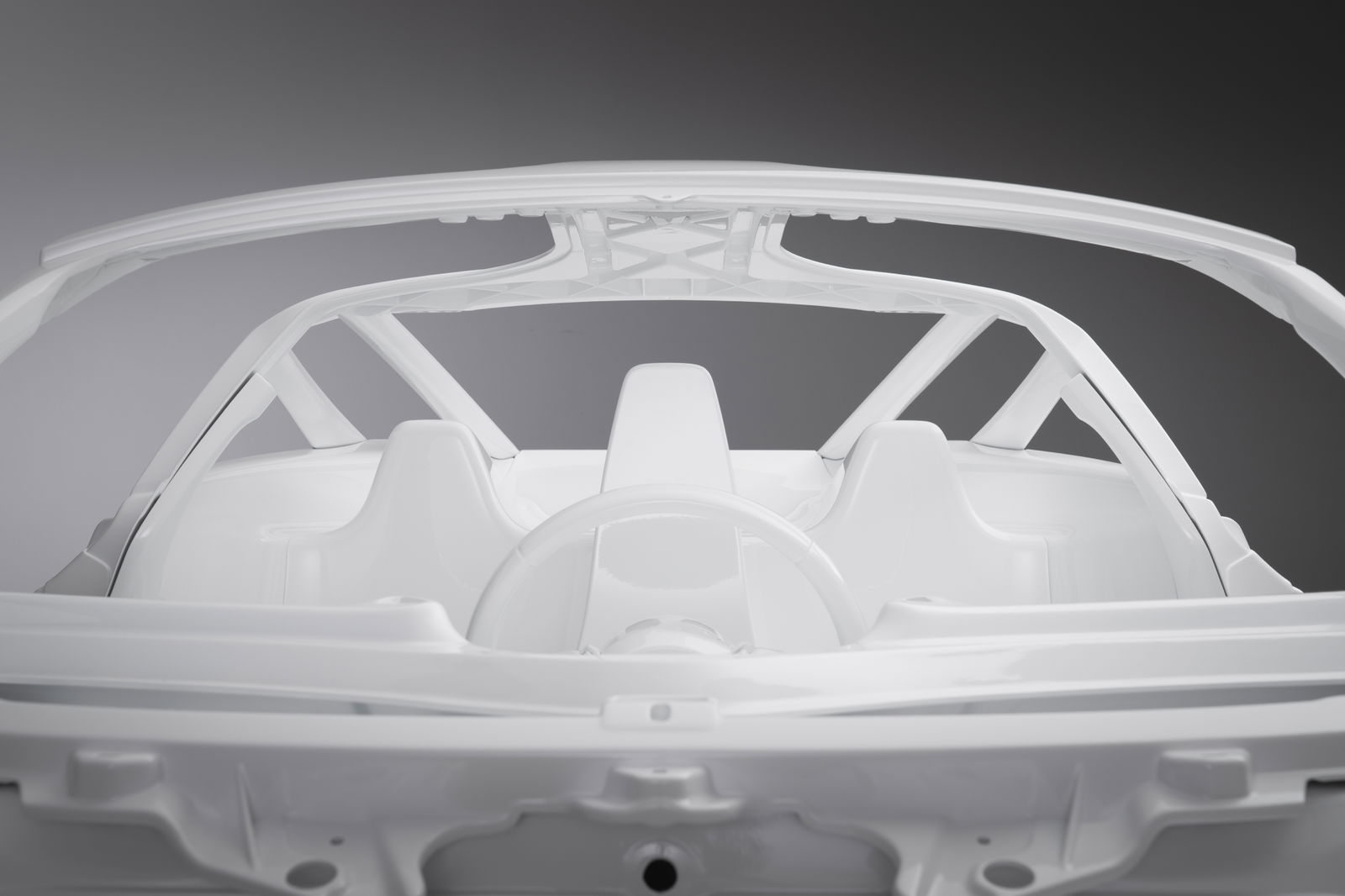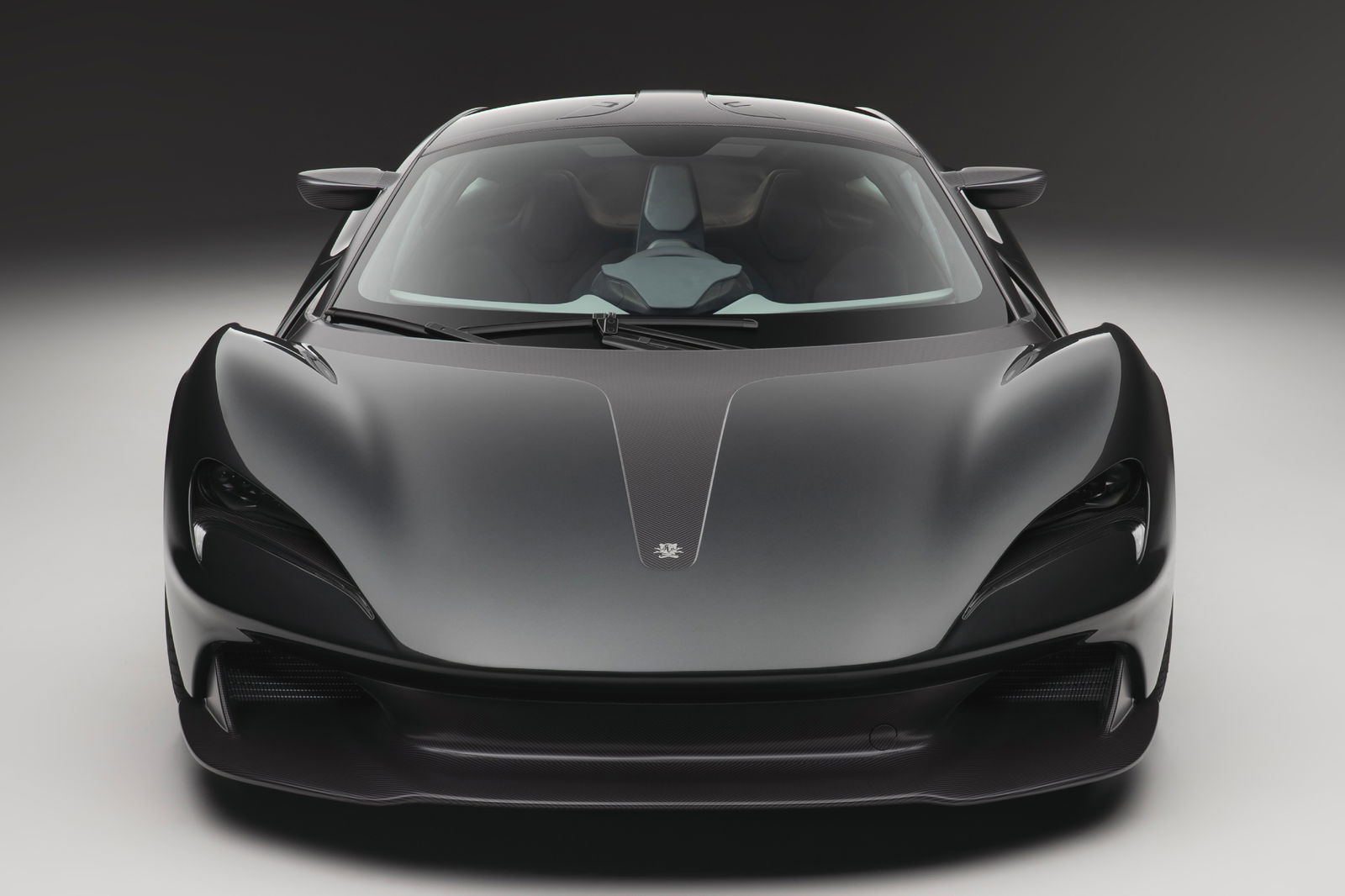In 1995, McLaren unexpectedly won the 24 Hours of Le Mans with its uber-money F1 supercar, beating dedicated prototypes against all odds.
The car was loaned to a Japanese team by Lanzante Motorsport, who prepared and ran the outfit, which crossed the line first with its now-famous Ueno Clinic livery and number #59 on the doors.
Now, Lanzante has turned its attention to reviving three-seat supercars, and it’s done so with a McLaren once again.
The Lanzante 59-95 – referencing the 1995-winning car’s number – is claimed to be based on a current McLaren platform (likely the 750S) but with “a carefully re-engineered example of the carbon fibre chassis”, which now accommodates three seats.

Like the McLaren F1, the driver seats in a central position, ahead of the passengers in the outer seats. This not only provides a more formula-racer style experience, but also a departure from the standard two-seat layout in almost every supercar.
Behind the driver sits a McLaren-developed twin-turbo 4.0-litre V8 engine, tuned to produce 634kW and 880Nm. That’s 82kW and 80Nm more than the McLaren 750S, and well and truly above the 461kW/650Nm outputs of the original F1’s 6.5-litre V12 engine.
Power continues to be sent to the rear wheels through a seven-speed dual-clutch automatic transmission, named the ‘Seamless Shift Gearbox’ or SSG by McLaren.

Lanzante is targeting a kerb weight of 1250kg for the 59-95, almost 100kg lighter than the 750S. The addition of the ‘LM30’ pack subtracts 20kg by including super-lightweight forged aluminium wheels, Inconel exhaust headers, titanium secondary and tailpipes, titanium body fixings, and gold-plated heat-shielding throughout the engine bay and exhaust.
This package also includes LM30 exterior badging, as well as an embossed Circuit de la Sarthe map on the driver’s head restraint and a “scrutineer-style chassis plaque”.
Of course, production is limited to just 59 examples, with prices in the UK starting from £1,020,000 before taxes – equivalent to about $2.1 million in Australia.

Lanzante isn’t the only brand celebrating 30 years since the Le Mans victory, as McLaren already unveiled its special-edition 750S earlier this year, complete with a choice of Le Mans Grey or McLaren’s iconic orange and carbon black exterior paint finishes.
Despite being significantly cheaper and closer to a production model, McLaren is only making 50 examples of its special anniversary edition.
It’s also not the only three-seat supercar we’ve seen in recent years, with the GMA T.50 – designed by the father of the McLaren F1, Gordon Murray – also launching in the past half-decade, though production is soon wrapping up.
McLaren pays tribute to Le Mans winning F1 the only way it knows how



















Discussion about this post